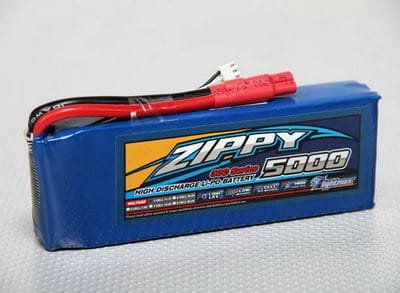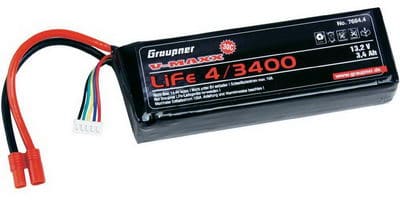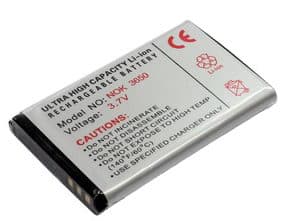When going portable with your electronics projects or diving into RC hobby, you eventually have to deal with batteries. No secret that best what is available today is lithium batteries. They come in many flavors. Why use lithium battery instead of alkaline or NiMh rechargeable? The short answer is – energy density. Lithium-Ion batteries can store a large amount of energy compared to its weight and can give out large currents. This technology made it possible to enjoy the long and powerful RC model (like quadcopter) flights. To achieve the same results with NiMh, it looks almost impossible due to weight and low current output. Lithium battery technology is constantly improving as different chemistry is used.

You can find lots of info about different chemistry of Lithium Ion batteries, so we won’t be getting into this.
Rechargeable Lithium batteries require special care all the time. It would be best if you charged them with proper chargers. You cannot overcharge them or over-discharge. Batteries are specified with maximum charge and discharge currents (C rating). In most cases, batteries already come with a small built-in circuit that cuts off the battery if it is discharged or current is more significant than max. But in exceptional cases, batteries do not have protection circuits—for instance, RC hobby stuff. You wouldn’t want your flying model to crash due to voltage cut-off. This is why here you are left with your own solutions. Let’s look a little bit at different Lithium batteries.
Li-Ion batteries
Li-Ion batteries use liquid (GEL) electrolytes, ensuring lithium-on exchange between electrodes. Usually, those batteries come in metal cans to preserve the inner structure. These batteries are more suitable for stationary electronics where size and shape don’t matter much. LiIon battery’s nominal voltage is 3.7V. They can be charged up to 4.2V (%100 of charge), and discharge should not be lower than 3.0V.
One significant downside of LiIon batteries is that electrolyte is flammable and explosive. If the battery is damaged, too much current is drawn or overcharged it may explode. So it is not recommended to leave it charging unattended.
LiPo batteries
Practically speaking, LiPo battery’s characteristics doesn’t differ much from LiIon. The only big difference is that instead of liquid electrolytes, there is dry material used. It gives more options to give it different shapes. This is why this type of battery is popular among RC hobbyists. You may find info that due to dry electrolyte consistency, it is harder to reach high charge/discharge rates. To overcome this problem, there are LiPo hybrids where the dry polymer is immersed in the gel. So these have the structure of dry batteries and properties of the liquid. Their voltage ratings are same 4.2V max charge, 3.7V nominal, and 3.0V minimum low safe discharge. These batteries are also flammable.
LiFe

Lithium Iron Phosphate (LiFePo4) battery uses newer technology that overcomes LiPo problems. They are much safer as they are non-explosive. They can provide higher discharge current and longer life. But this battery has different voltages: 3.6V max charge, working voltage 3.2V, and min discharge 2.8V. So it requires a different charger than LiPo or LiIon.
Battery packs
To get more capacity or higher voltage, cells are combined into battery packs. Manufacturers usually do this as they have the equipment to match internal resistance of cells and keep similar characteristics between cells in the pack. So it would be best if you didn’t build your own packs. Every battery pack is marked with “S,” and “P” marks indicating the number of batteries connected in series and parallel. So if you find 2S2P, this means that two cells are in series and then connected in parallel. Parallel connected cells have the same voltage as single-cell 3.7V for LiPo but dual voltage. When cells are connected in series, voltage doubles 2*3.7 = 7.4V, but capacity is the same as a single cell. Parallel cells give a double discharge current.
C rating
Lithium batteries are marked with C rating. This indicates the maximum current battery can be discharged. 1C is equal to battery capacity. So if battery capacity is 5000mAh and is rated 30C this means that it can output 5A * 30 = 150A safely. It can also be characterized by charging C rating. If not specified, then it usually is 1C. So 5000mAh battery should be charged at 5A or less.
Balancing battery packs
When the battery is combined with several cells, it needs balancing. This means that all cell voltages inside pack must be kept equal, or this will lead to short life or pack damage. If you charge the whole pack and not look at individual cell voltages, there might be a situation when one cell gets overcharged and then might explode or catch on fire. The same situation with discharge – if you monitor all pack voltage, some cells might get over-discharged while rest will have enough juice. This also may lead to short life or even the pack’s death. So this is why most chargers come with balancers. Batteries usually have a separate cable for balancer. So when you charge the battery, you should turn to balance one to ensure that all cells are charged with the same charge. Sometimes when your battery is well balanced, and you are sure that it is healthy, you may charge it several times without balancing.
Charging
We talked a bit about charging currents. It is related to a battery C rating. There might be some argues about charging current – make it 1C or try to make it much lower, like 0.1C or 0.5C. It may seem that charging at the lower current battery is less stressful, but in reality charging process last much longer and so critical chemical processes have more time to kick in. I think if it is allowed to charge at 1C, then you should do this. Of course, you should monitor battery temperature as well. High temperature is a significant factor in degrading battery life. Your battery should not exceed 40 – 50ºC either during charge, neither use, or storage. Your proper charger should have an optional temperature sensor that can be stuck to battery pack during charge. The charger will cut the charging process if the temperature reaches a dangerous level.
Storing batteries
Especially if you are RC hobbyist, you probably have more than one battery pack. You don’t use them all every day. So what is the safest way to store batteries so they would be the same characteristics even after several months? The first rule is to charge batteries to its nominal voltage. If LiPo is rated 3.7V, then it should be charged to 3.7V. Fully charged battery degrades significantly fast. Also, don’t leave discharged batteries as they loose capacity this way. Overall it is generally recommended not to fully charge your battery to 4.2V (100%) if you want to prolong the life of it. As a rule of thumb is to charge LiPo batteries to 80% of its capacity. It is better to buy a larger capacity battery than always fully charge a smaller one. And the best way to store batteries is to keep them cool.
LiFe batteries are better at storing. LiFe batteries don’t suffer if fully charged. So they can be stored fully charged. Once stored, it is good practice to check batteries at least once a month. Batteries slowly discharge during this time, and who knows, you might find some cells dropped to dangerous discharge levels. So you may need to recharge to keep them at an optimal level.
Safety precaution
You can imagine how high energy those batteries can store. So safety comes first when working with them:
- Do not overcharge the battery over the maximum safe limit (4.2V for LiPo);
- Do not overcharge below the minimal safe limit (3.0V for LiPo);
- Keep charging and discharging currents within safe margins (following C rating);
- Do not let it overheat either internally or from external sources like the sun;
- Do not damage mechanically. Dents and bumps are not OK;
- Use protection circuits or at least alarm circuits for monitoring;
- Do not leave charging on flammable surfaces. Use LiPo bags;
- Do not leave charging unattended.
This is really impossible to cover all info about batteries as there are lots of various cases and types. If you are dealing with lithium batteries, ensure you understand all requirements, dangers and limits. If you have questions or want to add something, be sure to leave a comment or join our forum for further discussion.
What are newer battery technologies that can be used or comply LiPo?
There are a few emerging battery technologies that could be used as alternatives to LiPo, Li-ion, and LiFe batteries for hobbyist applications. These include solid-state batteries, sodium-ion batteries, zinc-air batteries, and supercapacitors.
LiPo batteries currently have the highest energy density among these battery technologies, with a range of 250-300 Wh/kg. Solid-state batteries have an energy density of around 200-400 Wh/kg, while sodium-ion batteries have an energy density of around 100-150 Wh/kg, and zinc-air batteries have an energy density of around 120-180 Wh/kg. Supercapacitors have a much lower energy density of around 5-15 Wh/kg but have a very high power density and are ideal for applications that require short bursts of energy, such as starting a car engine or powering a camera flash.
The choice of battery technology will depend on the specific requirements of the application. Some factors to consider include energy density, power density, lifespan, rechargeability, and cost. Hobbyists should also consider safety factors such as the risk of fire or explosion and ensure that the batteries they choose are compatible with their equipment and charging systems.






